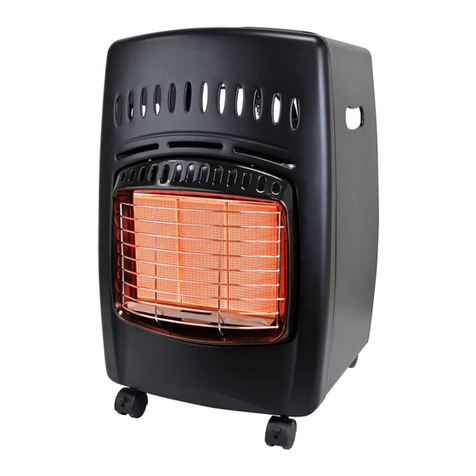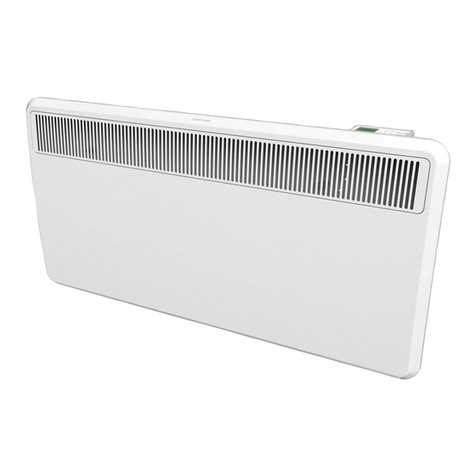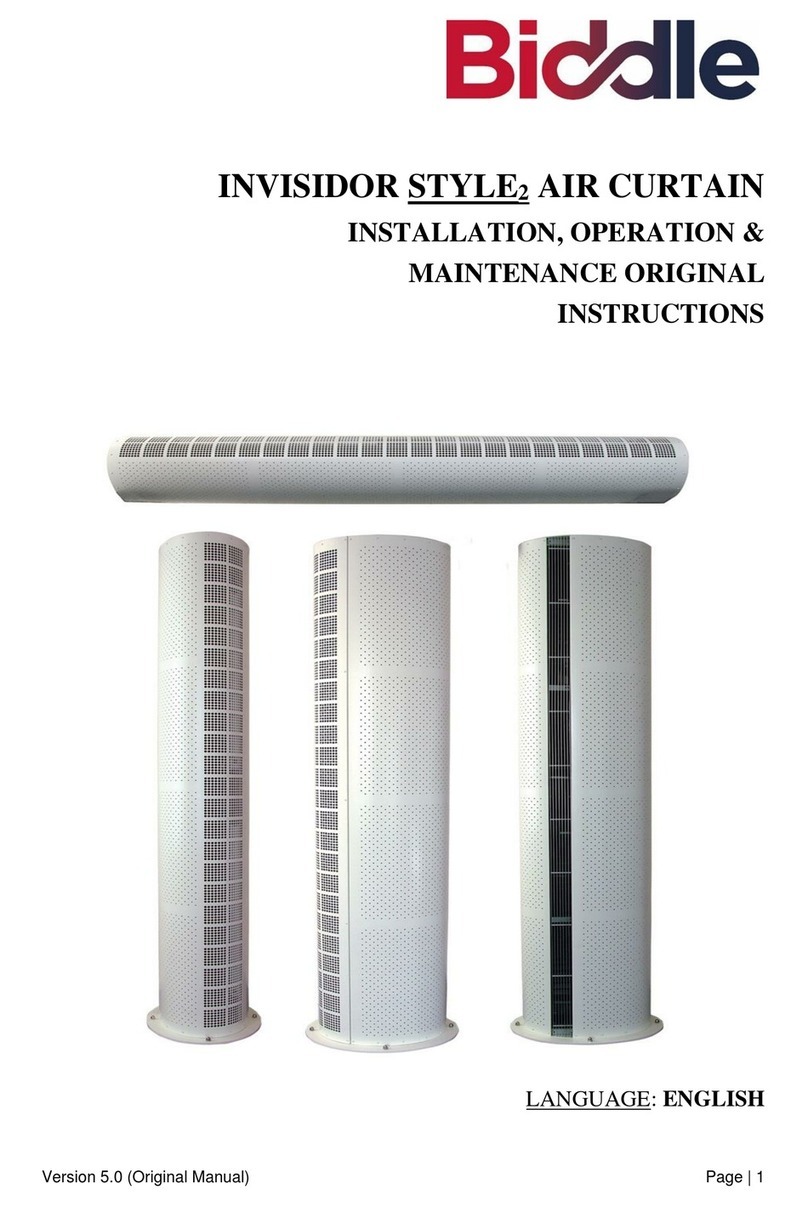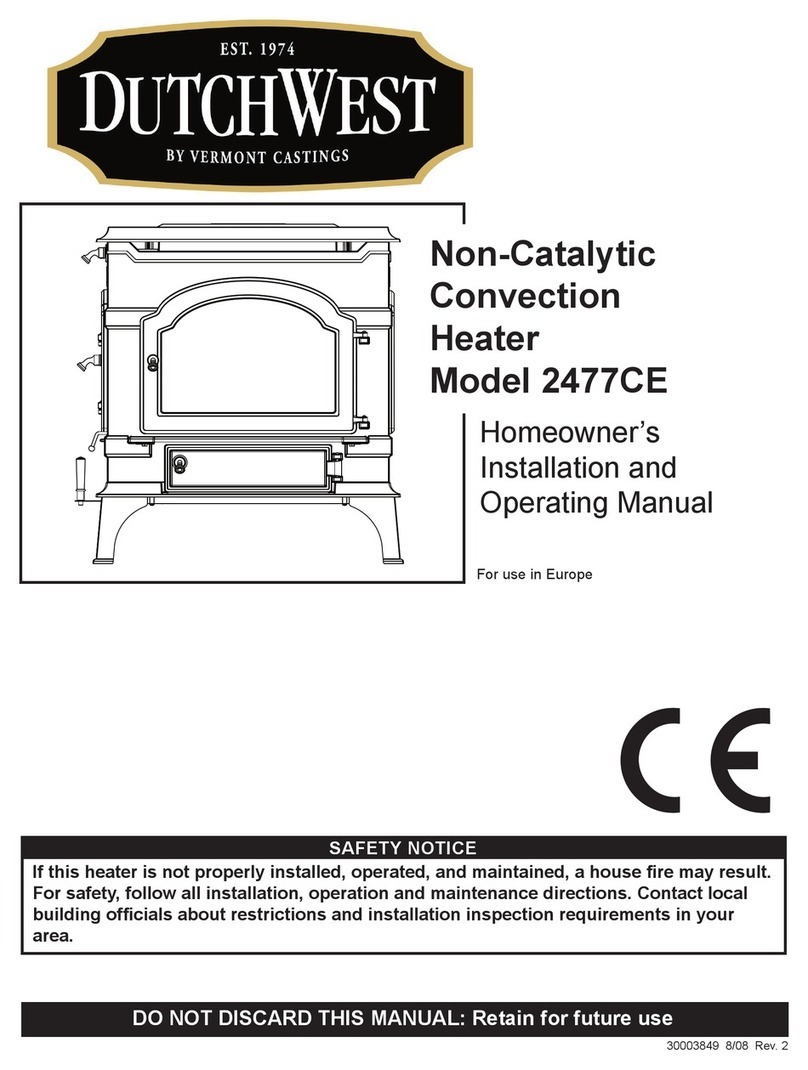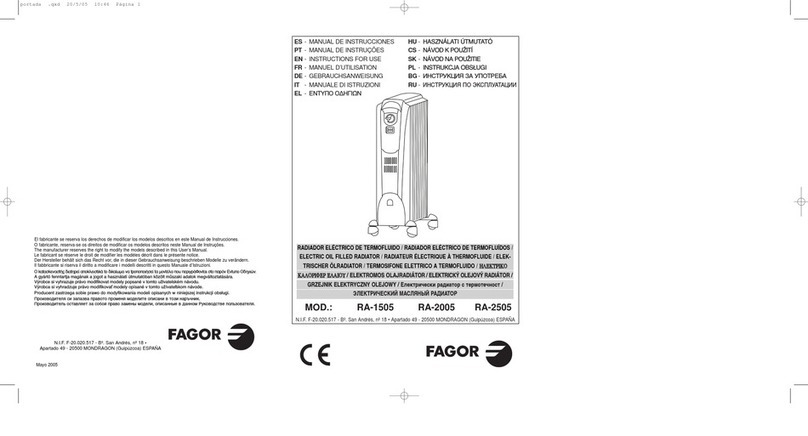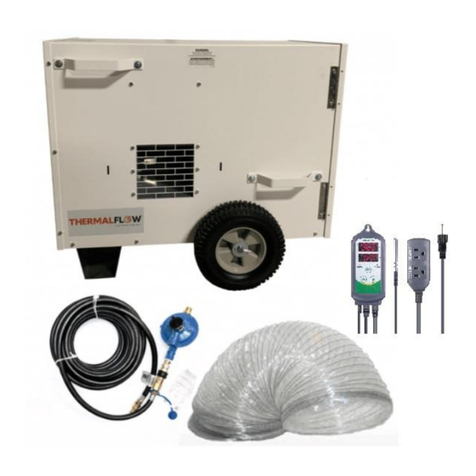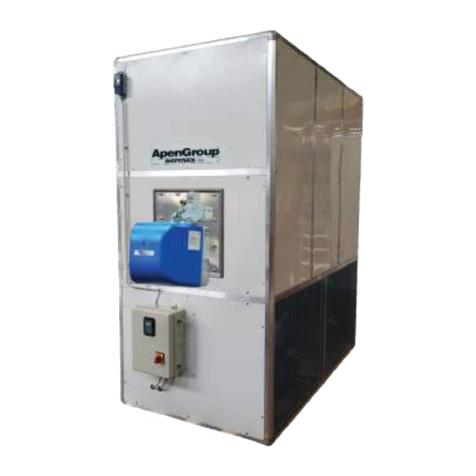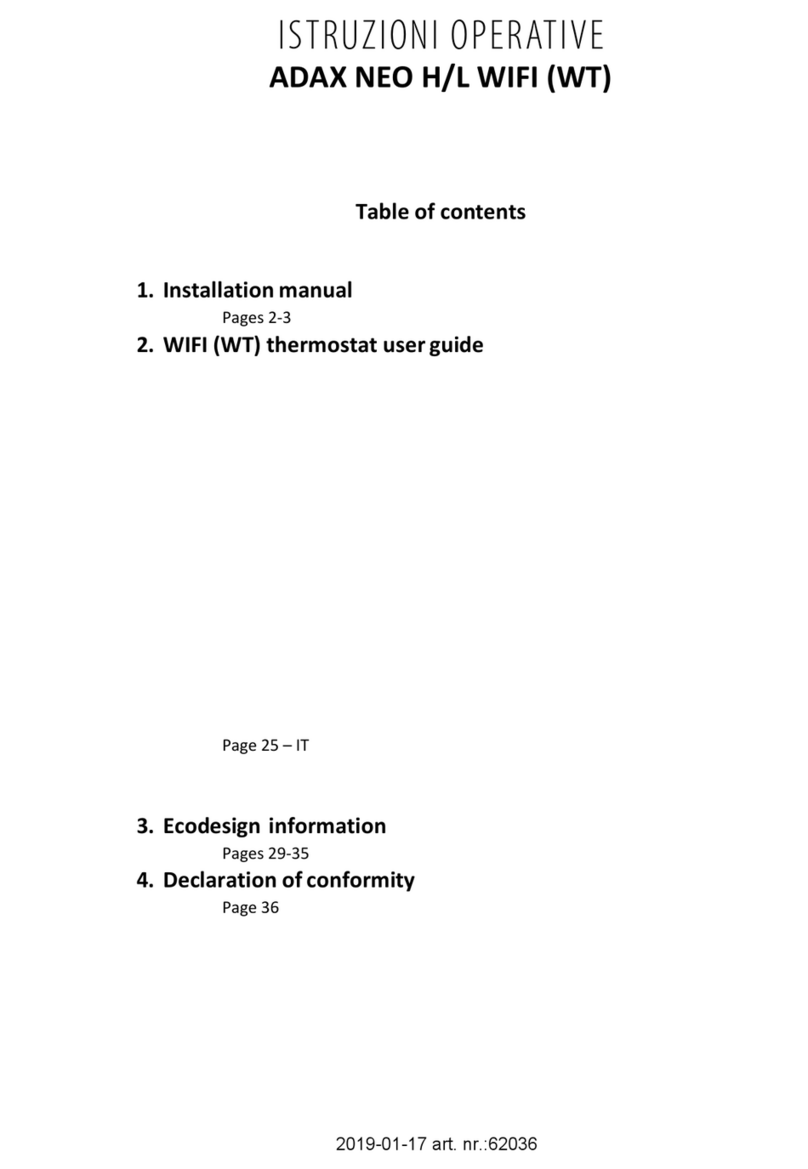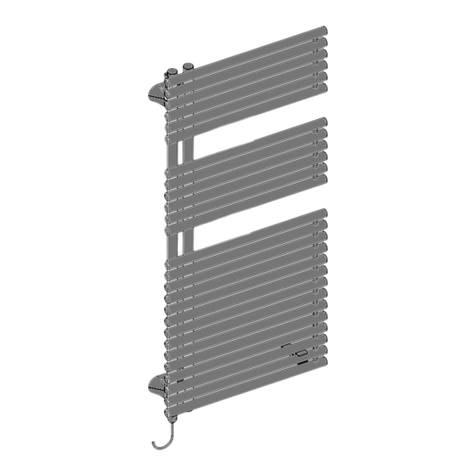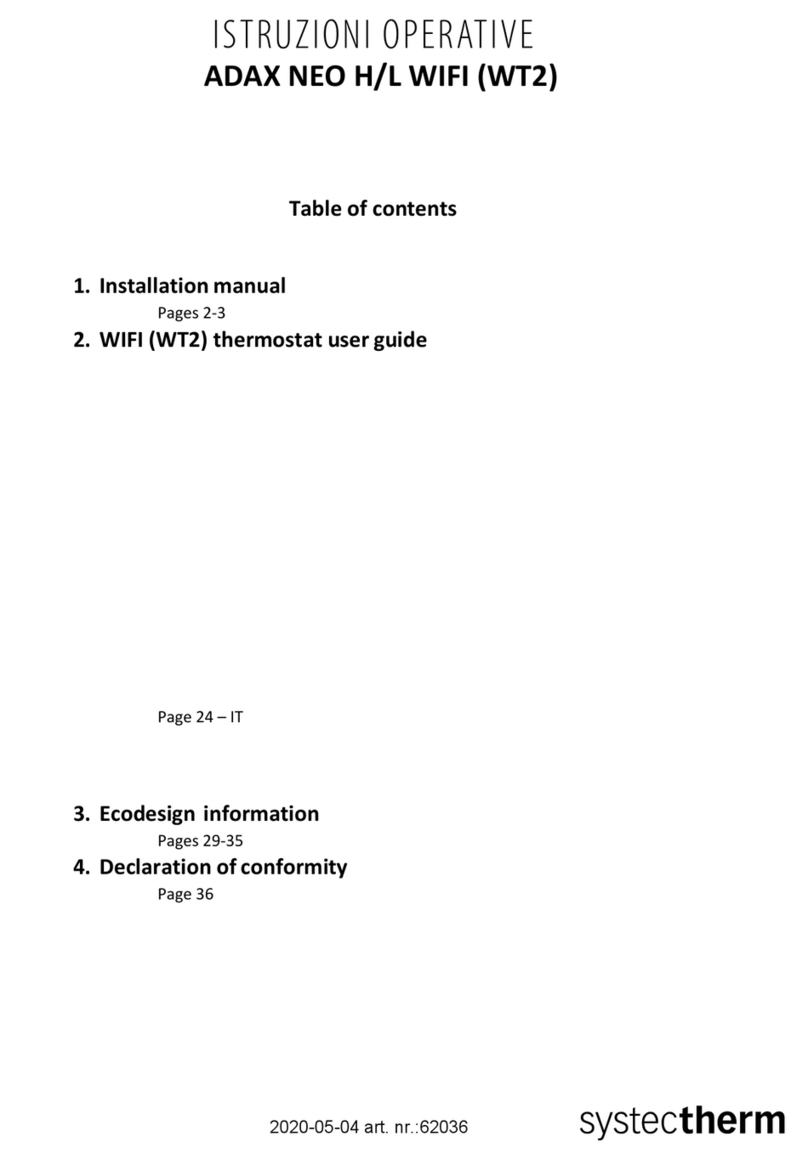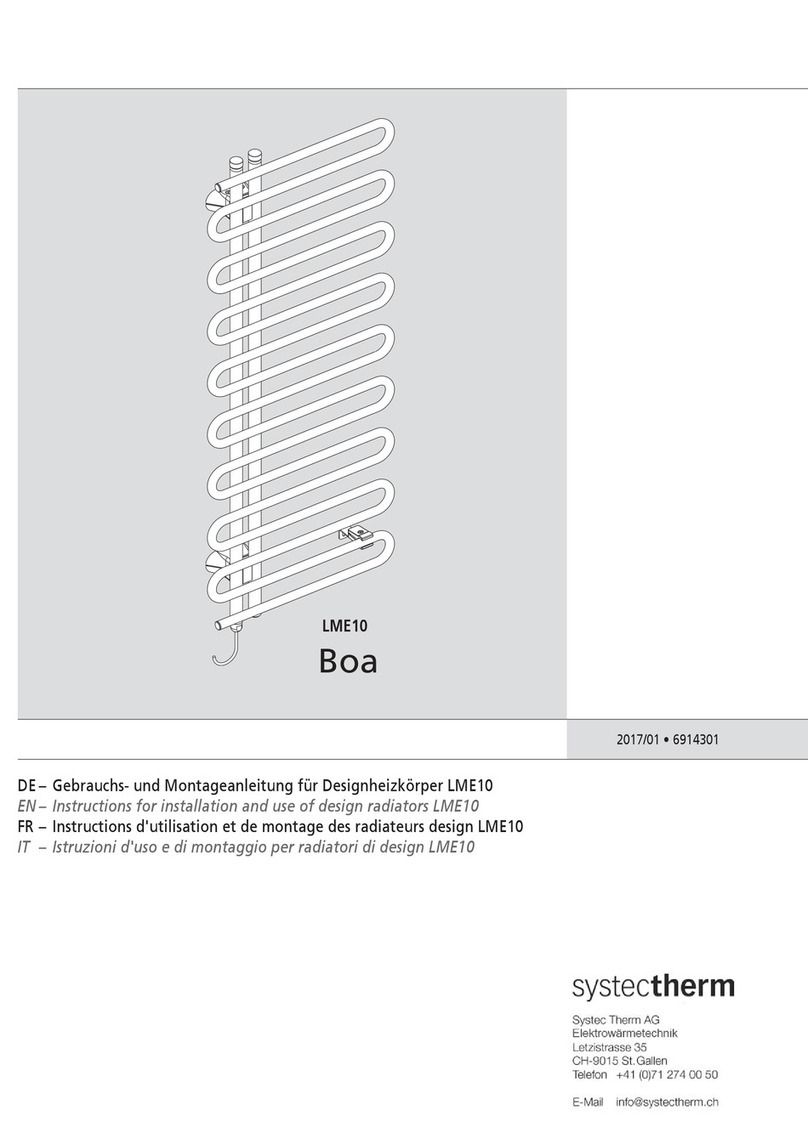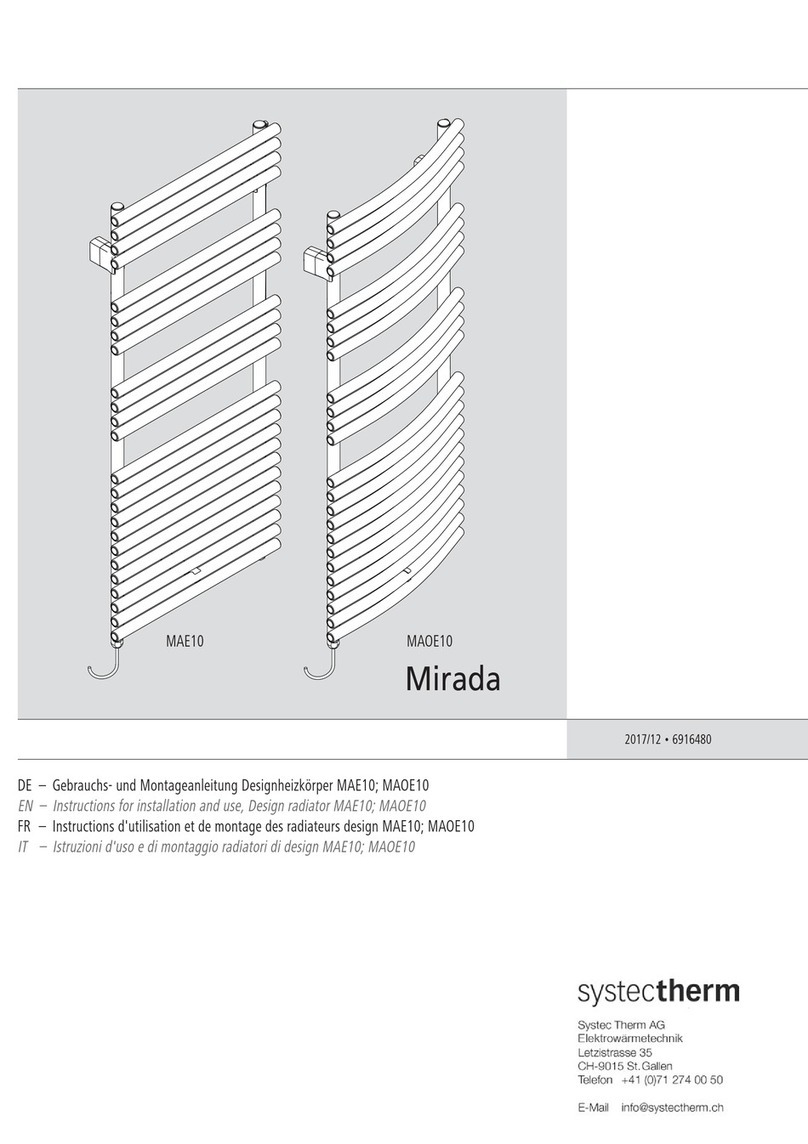
5
Les enfants de plus de 3 ans et de moins de
8 ans ne peuvent ni introduire la fiche dans
la prise, ni nettoyer l'appareil, ni effectuer la
maintenance relevant de l'utilisateur.
Ŷ
Surveiller les enfants afin de s'assurer qu'ils ne
jouent pas avec l'appareil.
Si l'appareil est exploité sans thermostats d'am-
biance séparés:
Ŷ
Ne pas utiliser l'appareil dans des locaux de
petite taille, dans des locaux abritant des per-
sonnes qui ne sont pas en mesure de quitter
la pièce par elles-mêmes, sauf si ces dernières
sont surveillées en permanence.
En cas de fuite de fluide caloporteur :
Ŷ
Collecter le liquide dans un récipient.
Ŷ
Informer l'installateur spécialisé.
Ŷ
Ne pas remplacer le fluide qui s'est écoulé
avec de l'eau.
1.3 Nettoyage
Ŷ
Avant le nettoyage ou la maintenance, couper
l'appareil de l'alimentation électrique.
Ŷ
Utiliser uniquement des détergents doux, non
agressifs.
1.4 Réclamation
Ŷ
S'adresser à son artisan professionnel.
1.5 Montage et réparations
Ŷ
Ne faire exécuter le montage et les réparations
que par un artisan professionnel pour conser-
ver ses droits à la garantie.
1.6 Élimination
Ŷ
Amener les composants usés avec leurs ac-
cessoires au recyclage ou au traitement des
déchets. Respecter pour cela les prescriptions
locales.
Ŷ
Apporter l'appareil dans un point de
collecte séparé d'appareils électriques
et électroniques.
Ŷ
Éliminer le fluide caloporteur selon les régle-
mentations officielles grâce à un système d'éli-
mination adapté (critère de classement des
déchets n° 160115).
2. Montage
Le montage du radiateur doit être exécuté par un
artisan professionnel. Le montage et le raccorde-
ment du set électrique ne doivent être exécutés
que par un électricien spécialisé (en Allemagne
selon BGV A3)
2.1 Consignes de sécurité
Ŷ
Lire intégralement cette notice avant le monta-
ge/la mise en service.
Ŷ
Après le montage, remettre les instructions
à l'utilisateur final.
Ŷ
Respecter les consignes de sécurité dans les in-
structions séparées relatives au set électrique.
Danger
Danger de mort!
Ŷ
Contrôler la position des conduites d'alimen-
tation (électricité, gaz, eau).
Ŷ
Ne pas percer de conduite.
Ŷ
Monter et raccorder l'appareil uniquement
lorsqu'il est hors tension.
Avertissement
Risque de blessure!
Ŷ
Tenir compte du poids du radiateur (voir page 8).
Ŷ
À partir de 25kg, utiliser des dispositifs de
levage ou travailler à plusieurs.
Avertissement
Blessures corporelles et dégâts matériels!
Ŷ
Contrôler la force portante du support. Tenir
compte du poids du radiateur (voir page 8)
et des charges complémentaires éventuelles.
Ŷ
Contrôler l'adéquation du matériel de fixa-
tion et la définir en fonction de la situation
de montage.
Ŷ
Tenir compte des exigences spéciales, par ex.
pour les bâtiments publics (écoles, etc.).
2.2 Conditions d'utilisation
Ŷ
Ne pas raccorder le radiateur au système de
chauffage.
Ŷ
En cas de montage dans des pièces équipées de
baignoires ou de douches: respecter les zones
de protection conformément aux normes d'in-
stallations nationales (en Allemagne DIN VDE
0100-701). Respecter également l'ensemble
des dispositions locales en vigueur.
Ŷ
Les appareils électriques sont admis dans les
pièces mentionnées ci-dessus lorsqu'ils sont
protégés avec un système de protection contre
les courants de court-circuit (RCD) (en Allemag-
ne selon DIN EN 61008-1 (VDE 0664-10)).
Ŷ
Les interrupteurs dans la salle de bains doivent
être installés de manière à ne pas pouvoir être
utilisés de la baignoire ou de la douche.
Ŷ
Les prises ne peuvent être montées qu'en de-
hors des zones de protection.
Ŷ
Remarque: le montage de produits dans la
zone de sécurité 1 est interdit par le fabricant.
Ŷ
Recommandation conformément à la
norme CEI 60335-2-43: afin d'éviter tout dan-
ger pour les enfants en bas âge, il convient de
monter le radiateur de manière à ce que le bord
inférieur se trouve à une distance d'au moins
600mm au-dessus du sol.
Ŷ
Spécification conformément à la directive
sur l'écoconception 2009/125/CE: L'instal-
lation et la mise en service de l'appareil sont
uniquement autorisées en association avec une
régulation de la température ambiante, qui
répond à certaines exigences minimales, telles
que le contrôle électronique de la température
ambiante, la régulation en fonction du jour de
la semaine et le contrôle de la température am-
biante avec détection de fenêtre ouverte.
Ŷ
Lors de l'installation, prévoir un système de
protection contre les courants de court-circuit
(limite de déclenchement inférieure à 30mA).
Ŷ
Si un appareil est raccordé sans connecteur
directement à l'installation électrique fixe:
monter un disjoncteur conformément aux pre-
scriptions locales d'équipement pour l'isolation
du réseau.
Ŷ
N'exploiter le radiateur qu'à la tension admis-
sible (voir la plaque signalétique).
Ŷ
Ne stocker et ne transporter le radiateur que
dans un film d'emballage de protection.
2.3 Caractéristiques techniques
Ŷ
Raccordement électrique:
–Le thermoplongeur est prémonté dans le
tube collecteur
–Raccordement à l'aide du set électrique
Ŷ
Pression d'essai : 13 bars
Ŷ
Remplissage: fluides caloporteurs ininflammab-
les et non toxiques
Ŷ
Mode de fonctionnement: fonctionnement élec-
trique, indépendant du système de chauffage,
avec régulation via le kit électrique
Remarques relatives au montage
Nombre de points de fixation:
Le nombre de points de fixation a été défini et testé
pour les briques légères en terre cuite à creux ver-
ticaux T14.
Ŷ
Arrêter le radiateur de manière à qu'il ne soit
pas endommagé.
Ŷ
Ne pas enrouler le câble.
Ŷ
S'assurer qu'une prise de raccordement d'ap-
pareillage ou une prise murale (230V, fusible
16A) est disponible à portée de câble.
Le raccordement électrique sortant du mur doit
être facilement accessible et ne doit pas être situé
dans la surface de projection du radiateur et du
régulateur.
Ŷ
Le radiateur ne doit pas être monté directement
sous une prise.

